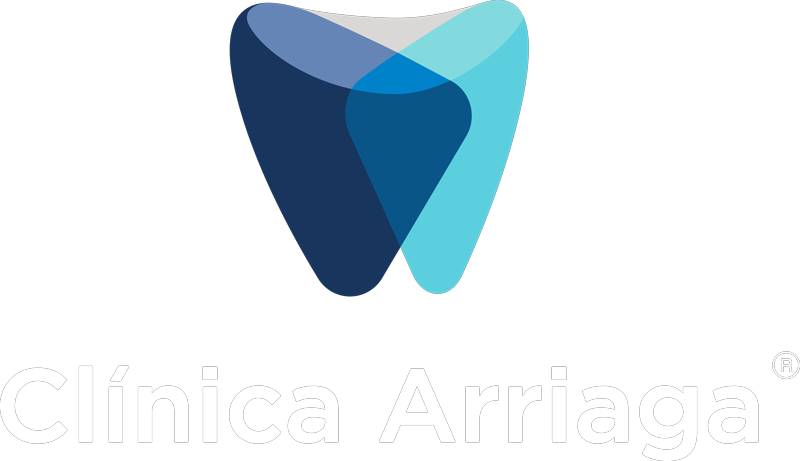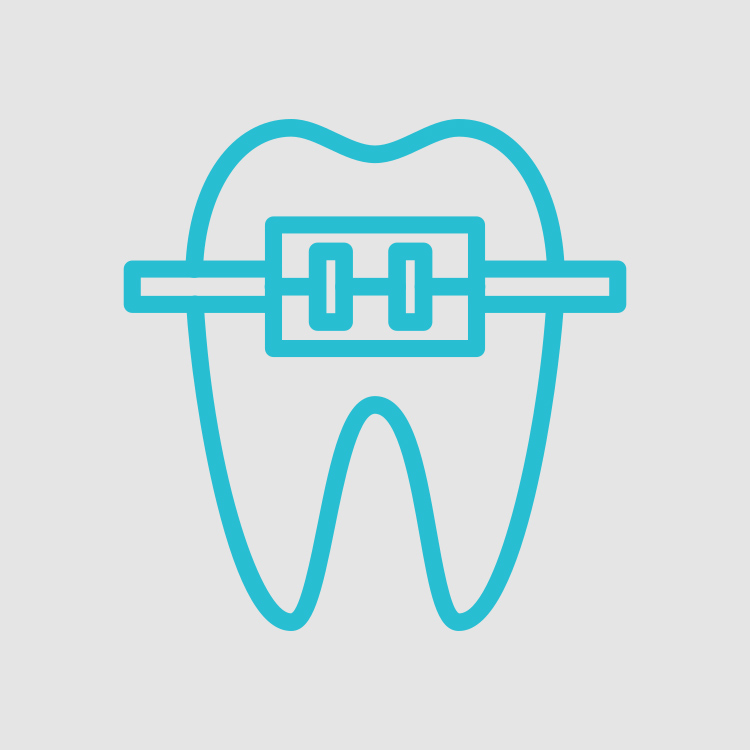
Orthodontics
Learn about the different types of Dental Braces
The specialty of Orthodontics is the area of denal medicine that treats and corrects dental malpositions and/or malformations of the lower third of the facial skeleton.
It is subdivided into two major groups:
- Early Interceptive Orthodontics – (From 5-6 years old to 12-13 years old)
- Corrective Orthodontics – from 12-13 years old
Early Interceptive Orthodontics
Early interceptive orthodontics is the subspecialty of orthodontics that corrects anomalies in the milk or mixed dentition. Depending on the diagnosis made by the pediatric orthodontist, fixed or removable appliances can be used, tailored to the child's dentition.
These braces can be colored or with accessories of your choice, thus favoring treatment compliance by the children, cooperation in the use of the braces, and maintenance of the same.
“The first orthodontic screening should be done around the age of 5-6 years, when the first exchanges of milk teeth for the permanent ones begin, and it is of great importance to evaluate whether the child has a correct development of it's jaws and the entire muscular structure."
“Early orthodontic treatment is fundamental because ir allows preventing changes in the normal growth of the child's face and minimizing future problems in adult dentition."
Corrective Orthodontics
Corrective Orthodontics is understood as all apparatology that allows the correction and treatment of dental malpositions after the mixed dentition phase - from 11 to 13 years of age.
As a general rule, all corrective appliances are fixed, that is, with devices that are cemented to the teeth, with the exception of the Orthodontic Aligners - Clear Aligner System.
At this stage, unlike Early Interceptive Orthodontics, orthopedic jaw movements will no longer be possible. but only orthodontic ones.
There are several types of braces:
Conventional Fixed Braces
This is the best known form of orthodontic treatment and is carried out by placing fixed braces on the front of the teeth, assisted by the use of archwires and elastic ligatures - which may or may not be colored.
As is already happening in the large European centers, metal brackets are being substituted by ceramic brackets, which are much more aesthetic, comfortable to use, and equally effective. In the clinic you will find 3M ceramic brackets, internationally recognized as one of the best brands of dental and orthodontic material.
Conventional aesthetic fixed appliances allow you to correct dental malpositions in an affordable way, and are the most widely used system in the last 20 years in developed countries.
Following the trend of new technologies, the clinic only places ceramic fixed appliances.
Orthodontists: Dr. Elsa Pita, Dr. Luis Macedo, Dr. Flávia Farinha, Dr. Marisa Sousa, Dr. Vando Neto, Dr. Petra Freitas and Dr. Mario Fonseca.
Self-ligating fixed appliances
This is one of the most revolutionary systems in modern orthodontics, being appliances that are also placed on the front side of the teeth. However, unlike the conventional system, they do not require the use of elastics for them to work.
At the clinic we use the revolutionary Damon system, created in the United States of America, where you can choose between metal or esthetic (sapphire) brackets.
This system, which is based on the principle of low friction, allows us to perform orthodontic treatments in less time, with a reduction of about 30 to 40% of the total treatment time. They are also more comfortable to use, and in our clinical experience there are fewer complaints of pain or discomfort from patients who choose this system than conventional ones.
Due to the type of forces used, there is also a decrease in the incidence of extractions, as the self-ligating system allows space to be created in the dental arches.
Approximately 65% of European and American Orthodontists are introducing self-ligating systems in their clinical practice. Clínica Arriaga is following the international trend.
Orthodontists: Dr. Luis Macedo, Dr. Flávia Farinha, Dr. Marisa Sousa, Dr. Vando Neto, Dr. Petra Freitas and Dr. Mario Fonseca.
Fixed lingual braces
These are braces whose parts are completely applied to the inner side of the teeth, being practically invisible due to the position in which they are placed.
They are differentiated appliances and are aimed at a public with high aesthetic demands, being one of the sectors of Orthodontics that has seen the greatest growth in recent years. It allows you to correct your smile, at any age, in a totally discreet way.
At the clinic we use the 3M Incognito system, a totally innovative and revolutionary lingual orthodontic system, in which the appliance is custom-made at the prestigious 3M Orthodontic laboratories in Bad Essen, Germany.
The molds are made by a Certified Incognito Bracket System Orthodontist and then sent for analysis by a specialized team who will custom make your appliance and draw up a treatment plan together with your Orthodontist.
Orthodontists: Dr. Elsa Pita, Dr. Luis Macedo, Dr. Flávia Farinha, Dr. Marisa Sousa, Dr. Vando Neto, Dr. Petra Freitas and Dr. Mario Fonseca.
Other fixed appliances
As a complement to the fixed orthodontic treatment we use, when necessary, the innovative Carriere Distalizers appliances, which allow corrections that until recently were only accessible through surgery or the use of extra-oral appliances.
These distalizers are auxiliary appliances to the corrective orthodontic treatment, being extremely comfortable and painless, with very high success rates and incredible aesthetic results.
The clinic, at the forefront of modern orthodontics, has been using these devices in recent years with high success rates and patient compliance, unlike other more invasive methods that until a few years ago had no other alternative.
Your orthodontist will thoroughly analyze the position of your teeth and determine whether you need a distalizer prior to fixed treatment, and it's use reduces the time you need to wear intermaxillary elastics during treatment by about 80%.
Orthodontists: Dr. Elsa Pita, Dr. Luis Macedo, Dr. Flávia Farinha, Dr. Marisa Sousa, Dr. Vando Neto, Dr. Petra Freitas and Dr. Mario Fonseca.
Invisible Aligners
- Invisible aligners are the most recent orthodontic technological evolution that allows the alignment of teeth in an esthetic and comfortable way for the patient. Through the use of invisible aligners it is possible to align teeth and correct malocclusions without the inconvenience of using metal brackets and orthodontic arches and all that this entails. If you have always wanted to align your teeth but the use of metal brackets was a barrier, we have the solution.
- Did you know that today i is possible to do orthodontic correction without having to wear a conventional metal appliance? Invisible aligners allow you to make your orthodontic correction in a discreet and comfortable manner through the use of highly esthetic invisible aligners, custom-made for each patient, that will allow you to achieve a new smile without the inconveniences of traditional braces.
- Transparent aligners, the latest technology in tooth alignment and malocclusion correction, offer the possibility of innovative and highly esthetic and comfortable orthodontic correction. In addition to not scratching, poking, or bothering as conventional braces often do, the patient will be able to remove the aligners to eat and perform oral hygiene, which will make everything much simpler.
How do Invisible Aligners work?
Invisible aligners allow you to align your teeth using clear aligners. These clear aligners are custom-made for each patient and are changed as often as recommended by your dentist, according to the degree of difficulty of the desired tooth movement, by applying pressure on the teeth at specific points and moving them little by little to the desired position. The dental aligners must be worn 22 hours a day to be effective, and can be removed for eating and dental hygiene.
In the case of Invisalign
Did you know that correction with invisible aligners is now also possible for children? Invisalign First allows a highly aesthetic, comfortable and effective individualized orthodontic treatment for your child, correcting the existing malocclusions while still in the mixed dentition phase and allowing the bone development of the jaws to occur within normality.
Orthodontists: Dr. Luis Macedo, Dr. Flávia Farinha, Dr. Marisa Sousa and Dr. Vando Neto.
Clear Aligners
Blog
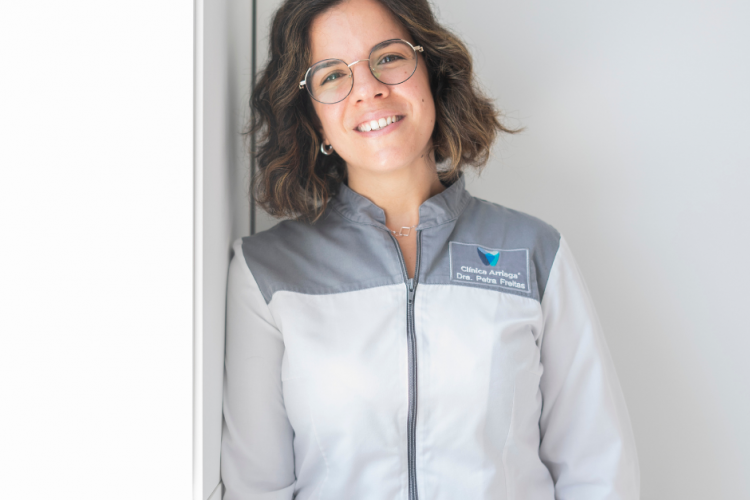
7 Signs Indicating Changes in Jaw Growth
When you hear the word orthodontics, you usually associate it with braces and teeth alignment. However, there is a very important area in Orthodontics focused on the position and size of the facial bones.
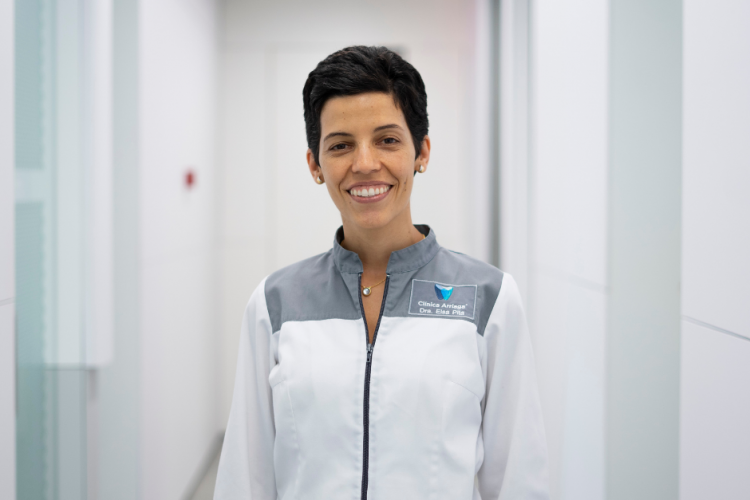
Pay attention to your child's face!
Many people believe that we should wait for all the teeth to be replaced before starting orthodontic treatments. But is it really beneficial to wait for this more definitive change? What are the advantages of opting for early intervention?
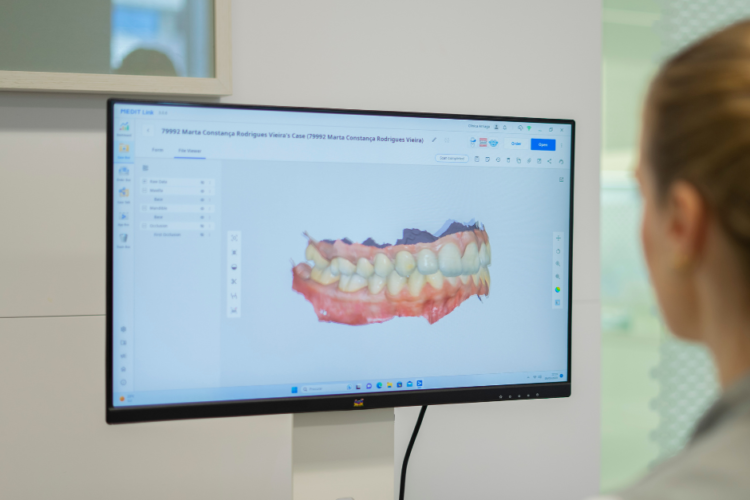
The Intraoral scanner in dentistry
The use of an intraoral scanner simplifies the job of dentists and enhances the overall experience for their patients.
